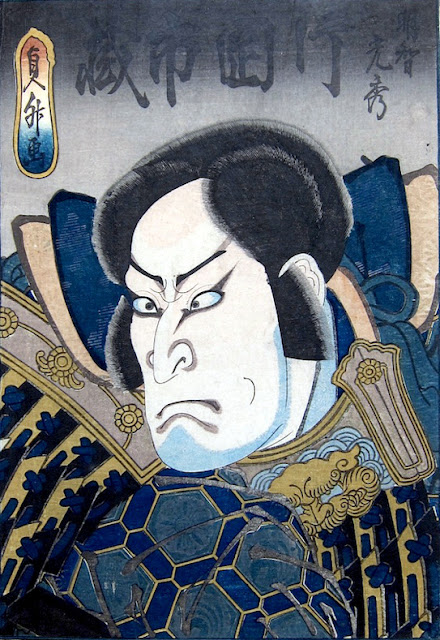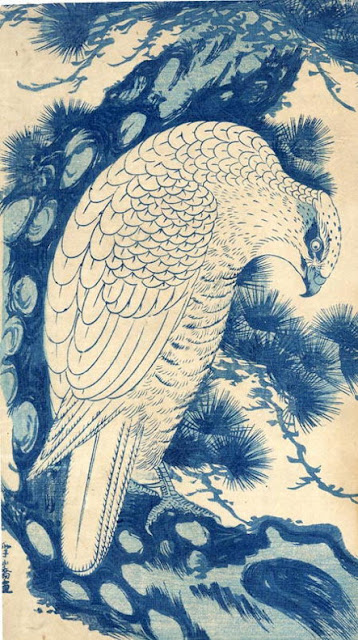 . . |
| Sadamasu: Kataoka Ichizo as Mitsuhide Akechi |
Utagawa Kunimasu, sometimes called Sadamasu, was active about 1830-1854. Besides the probability of his having studied under Kunisada, very little is known about him.
The print is Kataoka Ichizo as Mitsuhide Akechi, from about 1841, a yakusha-e of a sort that is called okubi-e. That is when the picture mainly shows the head, but no complete body.





